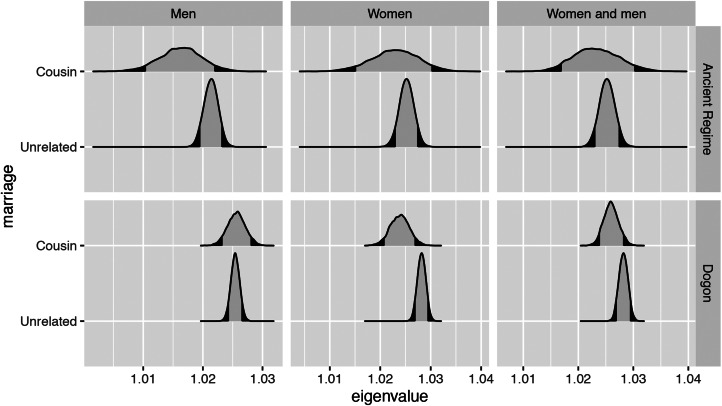Figure 3.
Projected growth rates are shown here using the density (y-axes) of the posterior distribution of the estimated dominant eigenvalue (x-axes). Estimates for the Ancien Régime appear in the top set of rows, and estimates for the Dogon appear in the bottom set of rows. Each estimate represents the projected growth rate of a hypothetical subpopulation of men (left column), women (central column) or men and women together (right column) from the Leslie matrices where we define parameters on the basis of both birth and marriage. Survival rates are from individuals who are born to cousins (or born to unrelated parents) and fertility rates are from individuals who are married to cousins (or married to unrelated partners). In the Dogon, the growth rate of a hypothetical population of women practising cousin marriage is slightly lower than the growth rate of a hypothetical population of women not practising it. For Dogon men in hypothetical lineages practising cousin marriage, there are no overall fitness consequences compared with men in hypothetical lineages not practising cousin marriage. In the Ancien Régime, hypothetical lineages of men practising cousin marriage have a lower growth rate than hypothetical lineages of men not practising it. However, no differences in lineage growth rate are observed for women.

